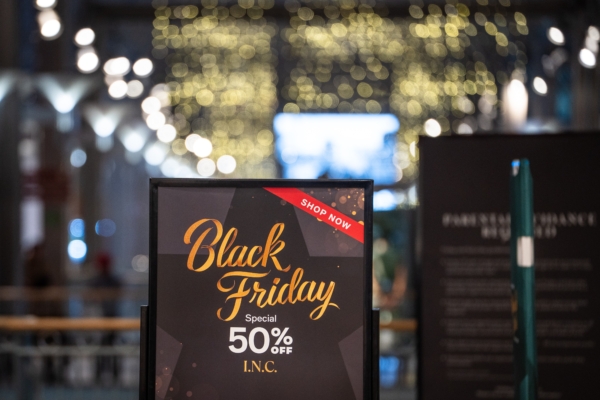“Black Friday” shopping has become a Thanksgiving tradition, but a survey shows that some claimed Black Friday discounts are actually just tricks, not really saving consumers money.
According to a report on the CNBC website’s “Make It” section, some of the Black Friday discounts you see online may not be as good as advertised. The latest data from personal finance company WalletHub shows that 36% of the prices of Black Friday promotional items are actually not discounted compared to prices between October 27 and November 17.
Andrea Woroch, an expert in saving money, says, “There are some tricks here. Retailers constantly adjust prices. So, they may just repackage items, call it a Black Friday promotion, when in fact the same discount was already offered weeks ago.”
However, this doesn’t mean there are no real discounts available. According to WalletHub data, the average discount for Black Friday items is around 24%. By doing a bit more research, you can ensure that you are fully taking advantage of the discounts you see.
Woroch suggests that ideally, you should keep an eye on the price of the item you plan to purchase in advance. But if you come across enticing discounts on Black Friday, comparing prices now is “definitely not too late.”
She believes that using online price tracking tools is a good starting point. She recommends CamelCamelCamel, a website that compares the current price of items on Amazon with the highest, lowest, and average historical prices.
Woroch also praises Honey, a subsidiary of the online payment service PayPal, for developing the Droplist browser extension. It allows you to create a list of items you are interested in, and it will notify you when prices drop at over 800 retailers.
Woroch notes that some products may be harder to track because they are specifically produced for Black Friday promotions. For example, a television might seem like a great deal, but it could be a simplified version of a well-known model, lacking some of the features you desire.
“Don’t assume it’s the exact model you’ve been keeping an eye on all year, waiting for a discount,” Woroch warns. “Check the model, when it went on sale, read reviews, and make sure it offers everything you need.”
Experts say that while retailers often promote Black Friday as the biggest discount shopping time of the year, this may not necessarily be the case for certain products.
For example, winter clothing typically sees major sales after Christmas, and the biggest furniture sales often occur around Presidents’ Day in February.
She advises against buying bundled items just to get a discount and overspending or meeting a certain spending threshold for free shipping.
“For example, buy two sweaters get one free. If you only need one sweater, don’t buy the second one just for the free one,” Woroch says.
She points out that you might find yourself with a bunch of things you didn’t really need after Black Friday. If your budget is already tight, “you might get into big trouble because of it.”

